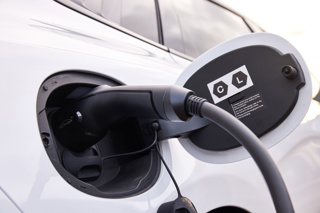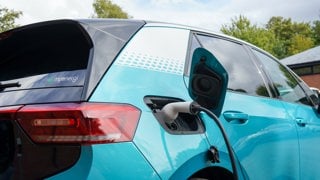Though volumes of all electric vehicles are likely to grow, there are some fundamental differences in selling hybrids and ‘pure’ EVs
1: Education
Tom Callow, the director of communications and strategy at charging infrastructure provider Chargemaster, believes dealers as well as consumers need more instruction on how electric vehicles (EVs) and plug-in electric hybrid vehicles (PHEVs) operate.
“It’s a new world with new jargon. Dealers need to learn the difference between a kilowatt and a kilohertz – it’s no different to explaining fuel economy and CO2 emissions, just different acronyms and terms,” said Callow.
Experienced dealers are already staking their claim. Nathan Tomlinson, Mitsubishi dealer principal at Devonshire Motors, has had early exposure to EV and PHEV technology through the Outlander PHEV, currently the world’s bestselling PHEV.
He said: “A first-time buyer should always be looking to visit a dealership with a proven background in EV and PHEV sales so that they get a comprehensive product explanation and demonstration. To own, understand and get the full benefit of a PHEV, there is a lot to know and learn.”
The Lexus RX 400h, the manufacturer’s first hybrid, arrived in 2005 and Diana Mackinnon, the general manager at Lexus Edgware Road, said it did take an effort to get people on board with hybrid technology, but she believes that has eased more recently.
She said: “Five years ago, diesel was driving the market and customers couldn’t get their heads around a petrol and electric combination. It required in-depth explanations, whereas consumers are much more informed today. However, educating people to adjust their driving style in a hybrid to maximise fuel economy is still required.”
Toyota first introduced the hybrid to the UK in the shape of the Prius in 2000 and, including Lexus, has sold 11 million such vehicles globally. With hybrid sales up 25% year-on-year and many consumers new to the brands and the technology, retailer training is a priority.
Toyota introduced its mandatory Hybrid Accreditation Standard last year, which identified 1,851 customer-facing retail network staff to receive a deeper understanding of its hybrid technology.
2: Longer sales process
At Devonshire Motors, all sales, service and parts staff are fully manufacturer-trained and the business operates four full-time demonstrator vehicles, which also enables them to develop a wider understanding of the different scenarios customers encounter when using their vehicles.
Tomlinson said: “A PHEV purchase needs a longer time frame, along with more flexibility, lots of product knowledge and attention to the customer’s circumstances. Typically, we see a longer enquiry and qualification period – to ensure the customer and the technology are a good fit – then an accompanied test drive, which is essential to demonstrate the nuances of PHEV technology.”
Callow said: “Given that EVs make up around 3% of UK car sales, a lot of people going in asking about EVs are already clued up, but that will change. It will be a longer process to give the consumer the background knowledge they need – whether they can use an EV day-to-day in their life as well as where they would charge it.”
Paul Craven, the general manager of the Toyota Academy, said: “Toyota introduced Prius PHEV technology to the UK market in 2012 and understanding the key differences between the two technologies when quantifying a customer’s needs is essential. Another challenge has been to establish the market differences between mild and full hybrid technology, as well as PHEV.”
3: Opportunity
“Dealers need to look at EVs as an opportunity, not a threat. A big issue is that EVs will lead to lower aftersales revenue, but there will be new ways for dealers to support EVs,” said Callow. He suggested offering public network access as part of a point-of-sale bundle and installing a public charging point on the forecourt to attract current EV drivers to the business.
Mackinnon is focused on meeting customer needs today. She said: “People who come into our showroom see self-charging hybrids as a benefit over full electric plug-in vehicles. They believe the hybrid is the car for the here and now.”
For Mackinnon and Craven, hybrids can be sold with the same add-ons. Mackinnon said: “Most vehicles are funded by PCP, so our add-on products are selected with a view to maximising the car’s residual value. We focus on paint and upholstery protection, SMART repair and Gap.”
Craven added: “With no clutch, alternator, starter motor or timing belt fitted, servicing is very straightforward. In addition, there is less brake disc and pad wear due to the efficiency of regenerative braking.”
Selling used EVs also offers an opportunity, with current demand for new EVs outstripping supply. Callow believes dealers should look at selling used EVs and highlighted the emergence of small independent EV specialists such as Eco Cars in Orkney already exploiting the gap in the market.
Mackinnon sells about 50 used hybrids a month at ages of up to 10 years old. She said: “The early CT has fast become an entry point for Lexus. I can’t get enough of them.”
4: Experience the cars
To maximise the benefits of driving an EV, or even a hybrid, requires a different driving process to conventional vehicles.
Tomlinson advocates a longer, unaccompanied, second test drive. He said: “Decisions are never rushed. There is a lot of information to absorb and practicalities to consider, so the final part of the PHEV sales process is to be confident in the job you have done and allow the customer all the time they need to make a decision.”
Mackinnon is a proponent of 24-hour test drives to ensure customers fully experience the vehicles, but with the right information provided beforehand. She said: “You will always get time wasters. In the past, we would try and swerve these people, but now we want as many people as possible to experience Lexus and hybrid driving.”
The handover is even more involved, with customers encouraged to return after a few days to clarify any points they are struggling with. Tomlinson said: “Handovers are typically around twice or three times the length of a normal handover as technology, usage and ownership factors are covered again.”
Following a Toyota test drive, the customer is emailed figures showing how much was completed using electric power alone – on average it equates to 55% of the journey.
5: Practicalities
Practical considerations for EVs include implementation of workshop equipment to manage service work, high-voltage training for technicians, and the installation of charge points on the forecourt.
Callow said: “The key thing for dealers to communicate relates to charging. They will need to know what kind of consumer is eligible for a home charging unit and take the consumer to a public charge point and explain about the network.”
He identified rapid chargers as one example of a gap in dealer knowledge, with some advising PHEV drivers to use them. With the exception of the Mitsubishi PHEV, plug-ins gain no benefit from rapid chargers, still taking four hours to charge, while taking up a space that could be used by an EV capable of charging in 20 minutes. “It’s inappropriate use of the infrastructure,” said Callow.
Craven said: “It is ensuring the owner understands basic hybrid system operation, how the system is designed to operate and the system parameters.
“With Prius Plug-in hybrid, it is key to understand from the customer exactly how the vehicle will be used and what charging facilities will be available at their home or work, for example. This is crucial to ensure fuel economy figures are maximised.”


















Login to comment
Comments
No comments have been made yet.